I believe my final photobook was extremely successful. However, to improve I believe my experience would’ve been a lot easier with more preparation In prep for my next mock exam and the final exam, I must remember to complete small details which should not be left until the final 3 day exam, as this will waste time and may prevent me from finishing all my tasks. Unfortunately I was not able to print my book to Blurb on the final day of the mock exam, and instead had to order it the day after, this can not happen in my real exam and must be completed within the time limit. However, this mock has taught be to work more efficiently with time and pay attention to the blog posts, planning and prep hat needs to be done in the weeks leading up to the final mock. I believe that however, I worked well under the pressure and solved any issues which resulted. For example, my images were not of a high enough quality to be posted onto my book, this was an issue I had to overcome, and attempt to find images of better quality which would not result in low quality and blurry images in my final book. Another issue I also faced is my final complete blog post with all screenshots and aspects of my mock process was unable to saved and erased from the blog, the outcome of this has been a highly less detailed analysis of my work completed on the mock date, however, with extra work and more explaining I will be able to overcome this by attempting to replace any screenshots that were erased and attempting to find clear pictures that I can use to input into my analysis blog post. I also need to beforehand, work on a practice book on Adobe Lightroom, where I can experiment with photo layouts and what kind of layout will look clean and effective to help my images be presented in the best way possible. An aspect of my work I am glad I included was a small paragraph demonstrating my intention for each magazine at the beginning of the book, this sort of contents page has helped to escalate the quality of my book and helped the reader to understand my intention of female gender stereotypes over time. I have focused mostly on the contextual and conceptual side of my work and focused more on a storyline of work and demonstrating a feminist viewpoint and both critiquing and praising the works of photographers through time. I also referenced both of my inspiration photographers Cindy Sherman and Helmut Newton in my book through my essay. I incorporated their work into a paragraph of analysis on their work and their intention. I then focused a paragraph on image analysis of their work and how I can relate it to my own, I then also compared a theorists with their work and highlighted the differences and similarities of their work, alongside the positives and negative of their viewpoints. I also incorporated my two inspiration photographers by including a photoshoot each in my book of images inspired by their work, this has helped my work be more relatable to the analysis I have completed on their work, and how modern day photography can relate to their work, without provocative and negative stereotypes of women.
Daily Archives: 10 February 2025
Filters
Photobook Specification.
PHOTOBOOK: Mon-Wed + MOCK EXAM
Follow these steps:
You want to aim for a draft layout before the Mock Exam begins, then use the two days allocated to fine tune final layout and design.
Draft Layout of Photobook.
1. Write a book specification and describe in detail what your book will be about in terms of narrative, concept and design with reference to the same elements of bookmaking as above.
Narrative-
Narrative: – Describe in:
- 3 words – Female Gender Stereotypes
- A sentence– The importance of stereotypes forced upon women in the past and present day and how it affects society and young adolescent girls.
- A paragraph– The topic I would like to explore is girlhood and femininity. I will be focusing particularly on older teenagers at the age of 17-19 and the struggles of moving from adolescence to adulthood and the hardships young women face. I like this topic as it is a current topic which is faced globally, and I feel it is a topic which I will enjoy expressing my opinion on and it is an important topic which needs embracing by young people especially. I would like to initially explore how the media portrays women in positive and negative ways and how it creates derogatory and unrealistic stereotypes of women. Gender Identity and roles is a topic I wanted incorporate and the stereotypical themes and personality traits a woman is expected to have. I find this topic interesting as expectations and views on women are changing but not particularly quickly. By focusing on multiple branches of femininity and youth such as empowerment, stereotypes, different eras, I would like to cover different aspects of women, femininity gender stereotypes, identity and rights. The idealised view of women is the key part to my chosen topic, and I feel I can expand on this by including both positive and negative viewpoints.
- How you want your book to look and feel– I would like my book to be a hard cover rectangular/ squared book with a clean sleek feel to it. I would like it to be relatively large (around A4) this is to create a book which is not too difficult to read and so that my images are not too small to see the details and understand the message behind them.
- Paper and ink
I am using a magazine layout style book which will have thinner paper for my book to have a more magazine feel to it rather than a book feel. This will be thinner paper inside which magazines and newspapers typically have.
- Binding and cover
This front cover will be a soft/paper back front cover due to it being a magazine and not a book.
- Title – My title will be something to do with the male gaze. I would like the title to just plainly be ‘The Male Gaze’ but I feel this title may be slightly too basic and not capture an audiences attention as quickly. However I also like the idea of ‘Through his Eyes: Exploring Femininity and Stereotypes, I really like this title as it is including the male gaze in a way of not directly saying Laura Mulvey’s idea of the male gaze but instead saying it in a less direct way. The next part of ‘Exploring Femininity and Stereotypes’ also is a short way or explaining the project I am exploring. However this second section may make my title slightly too long, however I really like this title but could also shorten it to ‘Through his Eyes’ as a large title and then accompanied and anchored with the subheading of ‘Exploring Femininity and Stereotypes’. Here are some other ideas for title names:
- – The Male Gaze
- – The Gaze
- – Gazing
- – Through their eyes
- – Through His Eyes: Exploring Femininity and Stereotypes
- Design and layout
I am going to have a book with a main front cover, a first front cover with a magazine interpretation of a 1960s/70s magazine., using Cindy Sherman inspired images. I am then going to have a magazine cover of a modern day girls magazine with promotional images of products inside, I will then have a final magazine cover from a modern day women’s empowerment magazine with Helmut Newton inspired images inside.
- Editing and sequencing
I am going to create this book on Adobe Lightroom and It will include images that are edited by using black and white filters and also editing resources provided by Lightroom to make my images bolder and higher quality. I will also be editing a section of images on Adobe Photoshop, which make the images look like promotional images with brands such as Gucci, Charlotte Tilbury promoted inside the book, I have also edited the magazine covers on Canva in order to create realistic magazine covers from software specialising in covers, this has helped to increase the value and complexity of my work to make it more realistic and believeable.
- Images and text-I would like my images to take up the whole page so that they are large enough to see, however this may be a struggle as many of my images are portrait and many of them landscape. This may means that my e.g. portrait images would not be able to fit the page completely. However, any portrait images could have a small white border around them, but still take up the majority of a page, or vice versa. I do not think that I want more than 1 image on a page, however when it comes to my second section and I am focusing on the fashion and beauty industry pushing beauty products onto young girls in order to make them want to be beautiful and purchase their their products.
2. Produce a mood-board
Here is a mood board of the Blurb Inspired photobook I have seen. I would like my images to be presented in a clean, sleek way which makes the book easy to read and enjoyable. I like his layout of clean white lines to separate images as I think it makes the page look less busy and does not clash with other images which decreases the quality of the book.
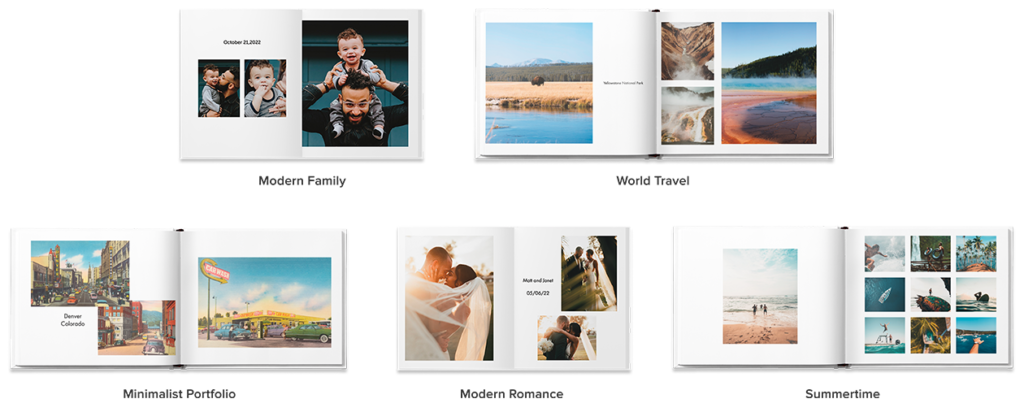
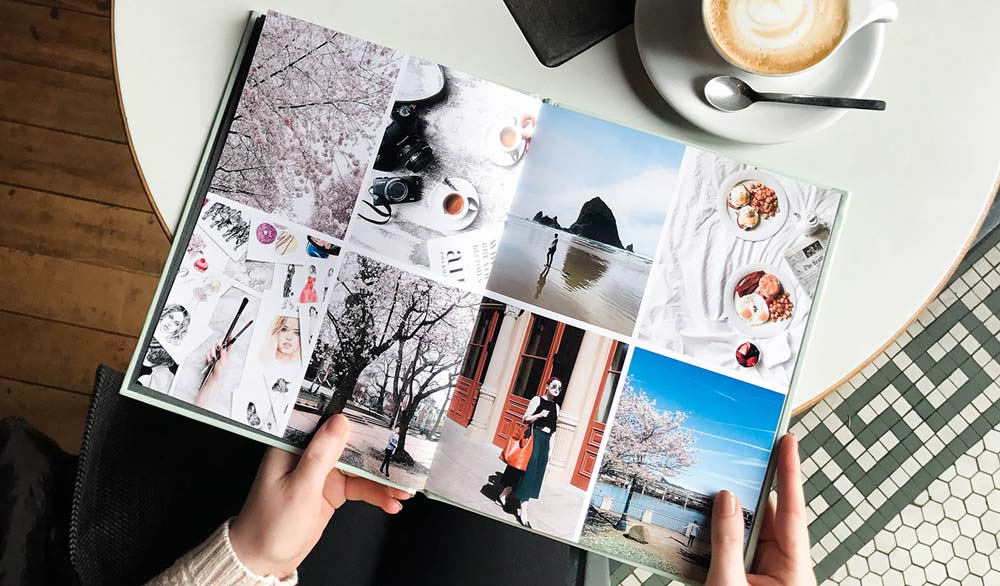
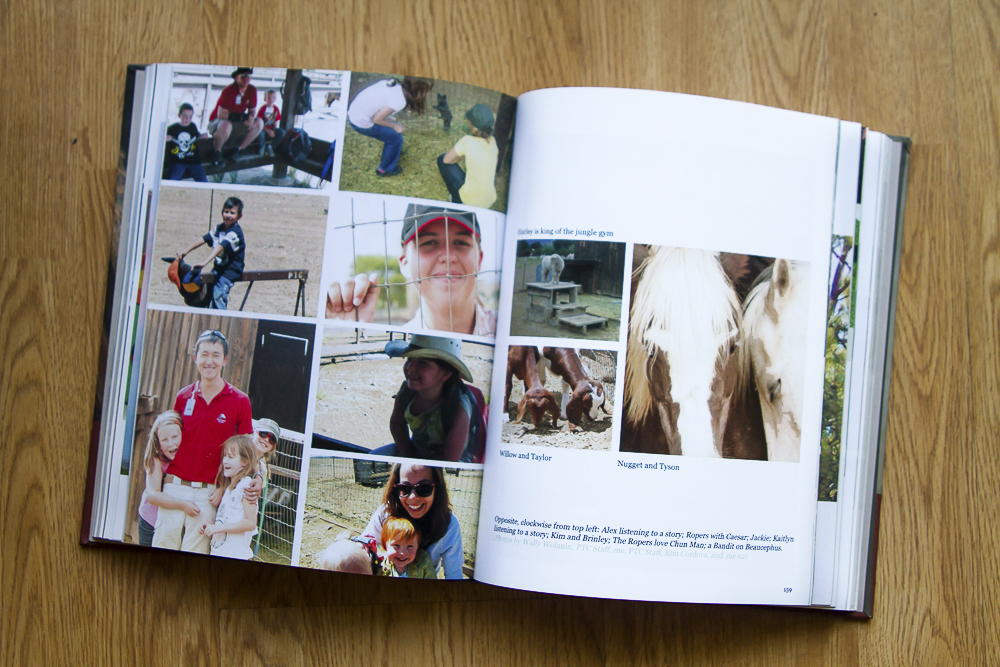

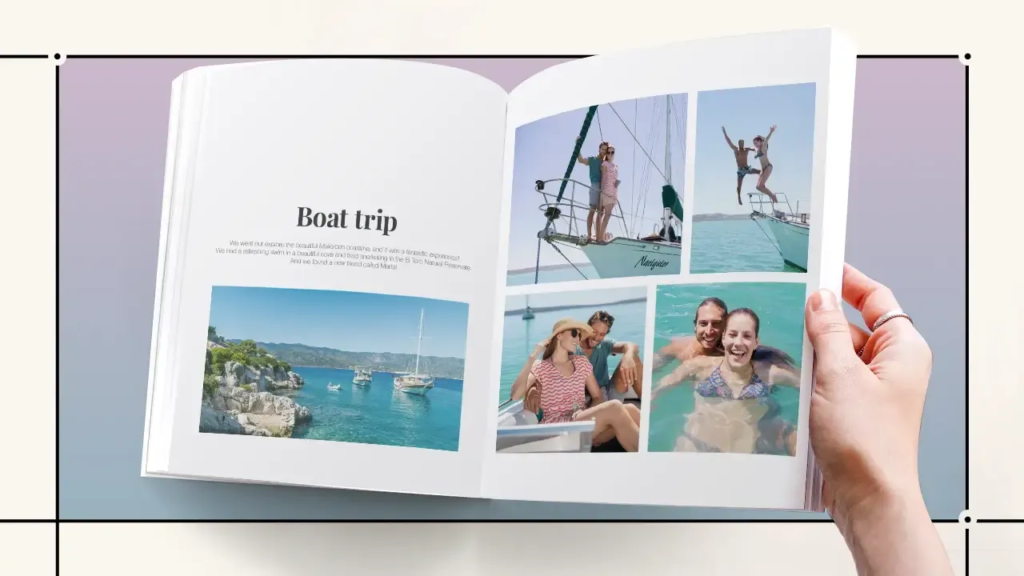
9. EVALUATION: Upon completion of photobook/ film and presentation of prints make sure you evaluate and reflect on your learning and final outcomes. Comment on the following:
I believe my final photobook was extremely successful. However, to improve I believe my experience would’ve been a lot easier with more preparation In prep for my next mock exam and the final exam, I must remember to complete small details which should not be left until the final 3 day exam, as this will waste time and may prevent ,e from finishing all my tasks. Unfortunately I was not able to print my book to Blurb on the final day of the mock exam, and instead had to order it the day after, this can not happen in my real exam and must be completed within the time limit. However, this mock has taught be to work more efficiently with time and pay attention to the blog posts, planning and prep hat needs to be done in the weeks leading up to the final mock. I believe that however, I worked well under the pressure and solved any issues which resulted. For example, my images were not of a high enough quality to be posted onto my book, this was an issue I had to overcome, and attempt to find images of better quality which would not result in low quality and blurry images in my final book. Another issue I also faced is my final complete blog post with all screenshots and aspects of my mock process was unable to saved and erased from the blog, the outcome of this has been a highly less detailed analysis of my work completed on the mock date, however, with extra work and more explaining I will be able to overcome this by attempting to replace any screenshots that were erased and attempting to find clear pictures that I can use to input into my analysis blog post. I also need to beforehand, work on a practice book on Adobe Lightroom, where I can experiment with photo layouts and what kind of layout will look clean and effective to help my images be presented in the best way possible.
5. Print a set of small work prints (4 to one A4 page) on the Laserjet, cut them up in guillotine and lay them out on the big white table for editing.
6. Decide on format (landscape, portrait) size and style of your photo-book. Begin to design your photo book, considering carefully, narrative, editing, sequencing, page spreads, juxtaposition, image size, text pages, empty pages, use of archival material etc.
I would like for my book to be around 30-40 pages long, like a usual conventional magazine and I would like for there to be sections dividing up my photoshoots, I will be adding my essay to the back of the book and I will be including a contents page to the beginning of my book.
7. Add your illustrated essay at the end of your photo book, including title, any captions (if needed), bibliography, illustrations of artists work (incl data) and images of your own responses. Think carefully about font type, size and weighting.
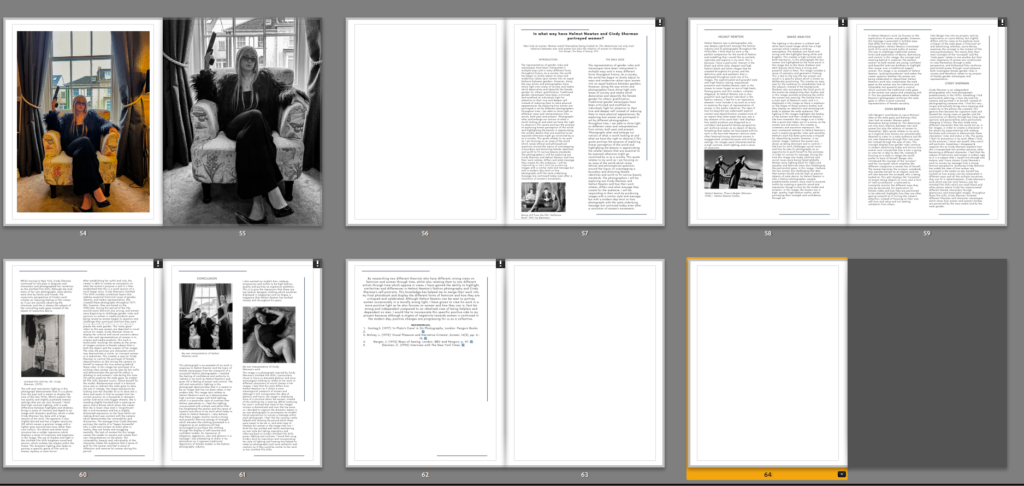
Personal Study: Final Images and Evaluation
Final Images
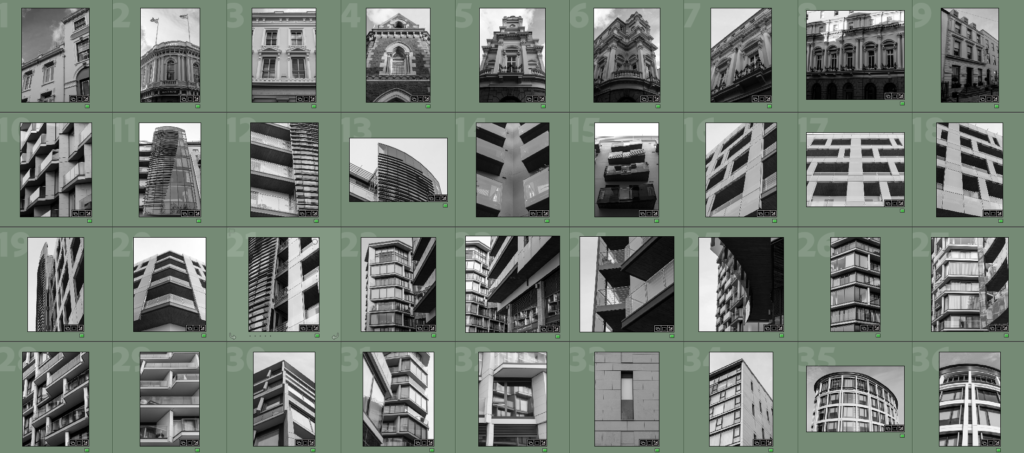
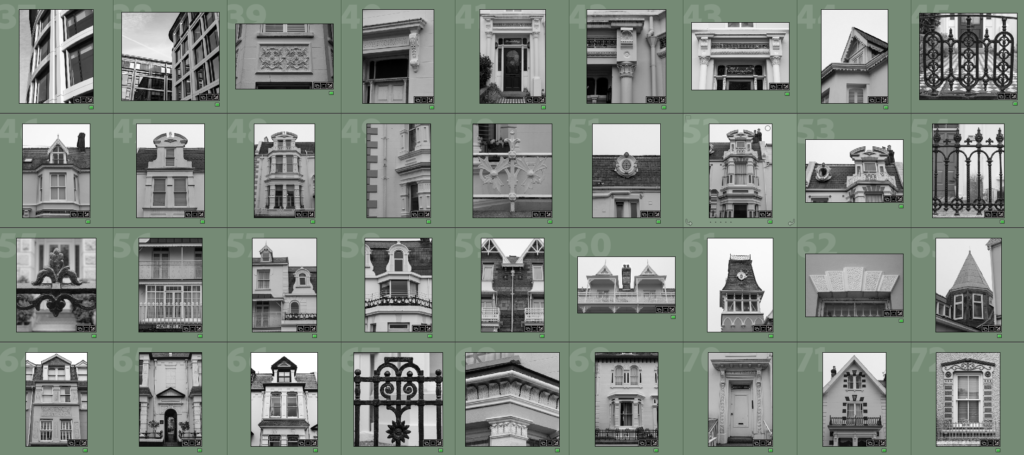
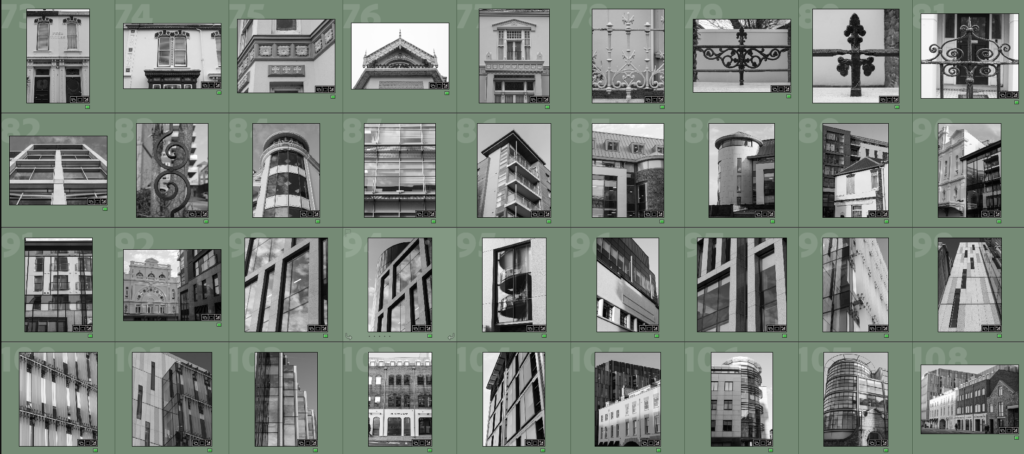
These are my final edited images. There is a total of 108 photographs. I believe in quality over quantity and think that there is definitely some stronger and weaker images within this group, therefore, I am going to make a final selection of my best images.
Best Images
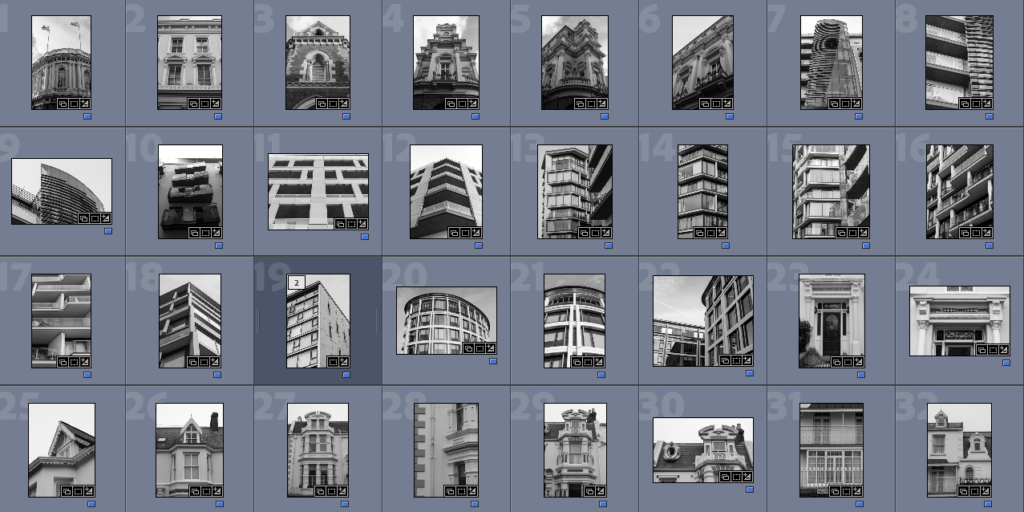
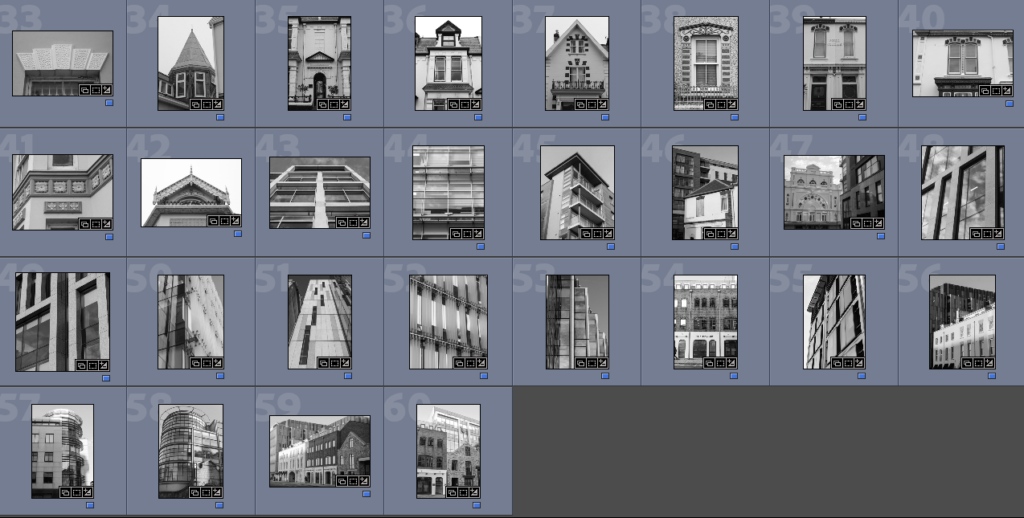
These are my best images. I went through my final images and annotated the ones which I thought were best in blue. These are the images which I will display in my photobook.
Evaluation/Comparison to Photographers
Keith Dotson
My Images

Keith Dotson’s Images

Comparison
Above you can see both my images and Keith Dotson’s images. The composition of my images are very similar to Keith Dotson’s, however, my images have less contrast and lighter tones. This is potentially due to the fact that many buildings he photographed were built with bricks whereas mine were painted walls. This makes Keith’s images darker with more shadows and textures. I would have hoped for this same outcome, however, I couldn’t find any buildings similar. Furthermore, I think that I could have improved my images by giving them more texture and contrast as some of them are quite boring and muted.
Alex Upton
My Images
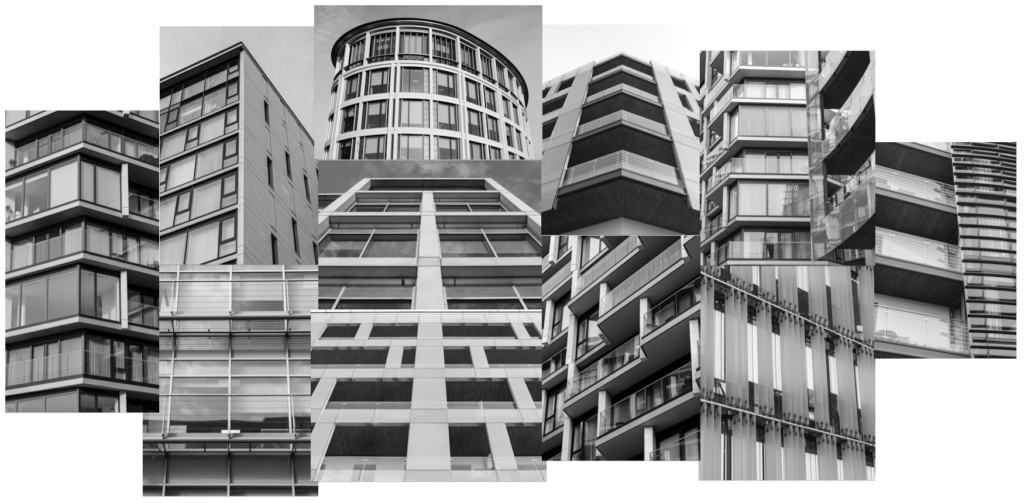
Alex Upton’s Images

Comparison
Above are both mine and Alex Upton’s images. The main difference between mine and Alex Upton’s are that my images are monochrome however his are in colour. I personally think that some of my images are very similar to Alex Upton’s in terms of composition. Here are some examples:
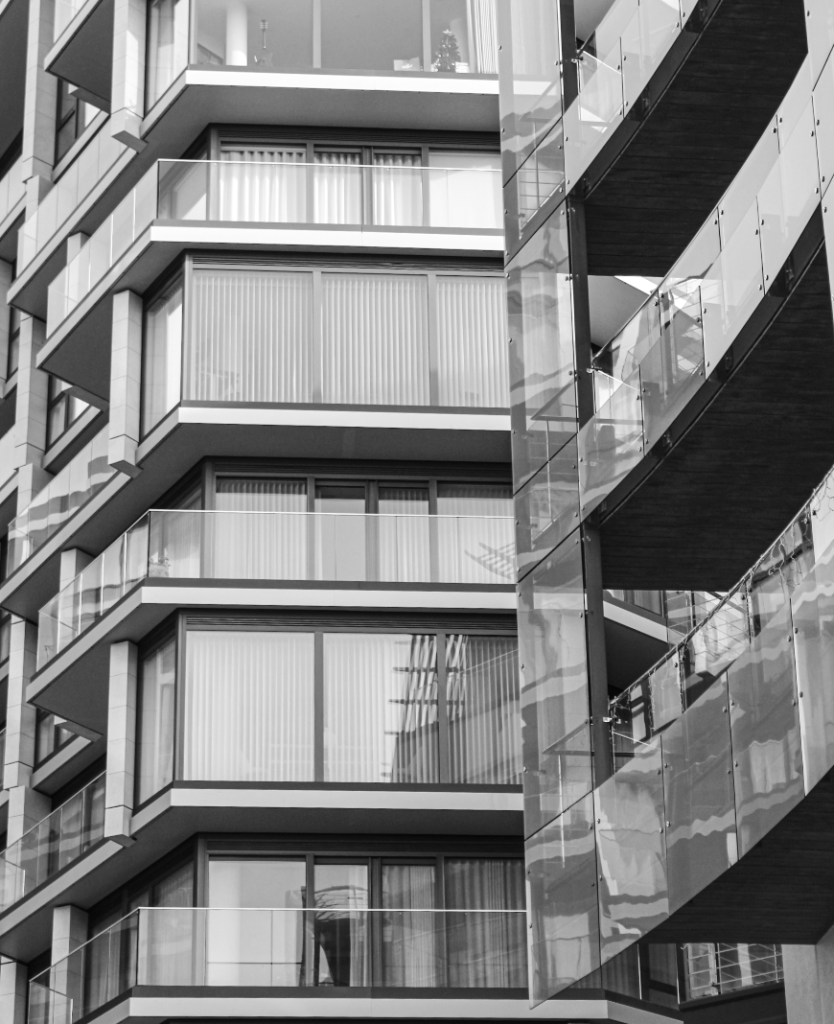
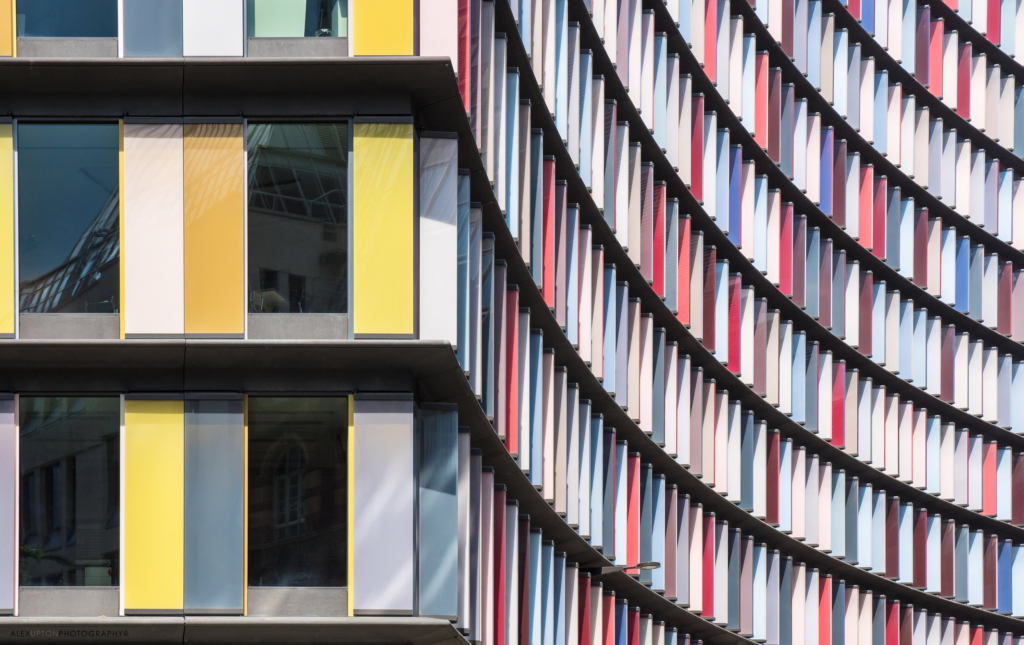




Additionally, my images also relate to Alex Upton’s as they both have harsh lines and contrast. We have also both displayed buildings in an abstract way, emphasising their geometric shapes. Finally, I think that my photographs turned out great considering I am in Jersey where there aren’t many modern, high-rise buildings.
Virtual Gallery
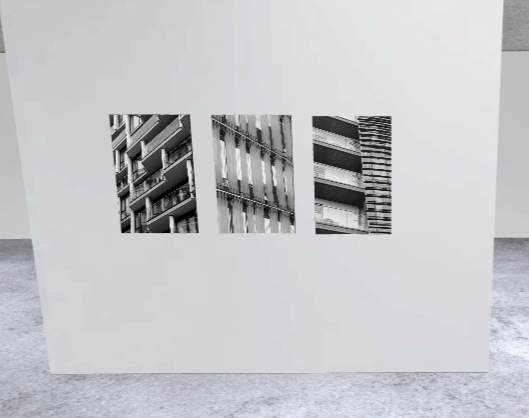
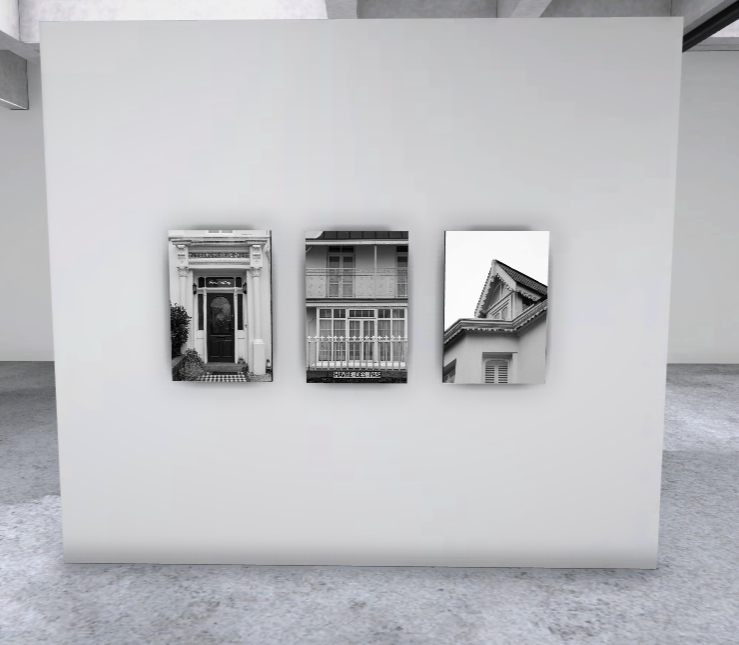

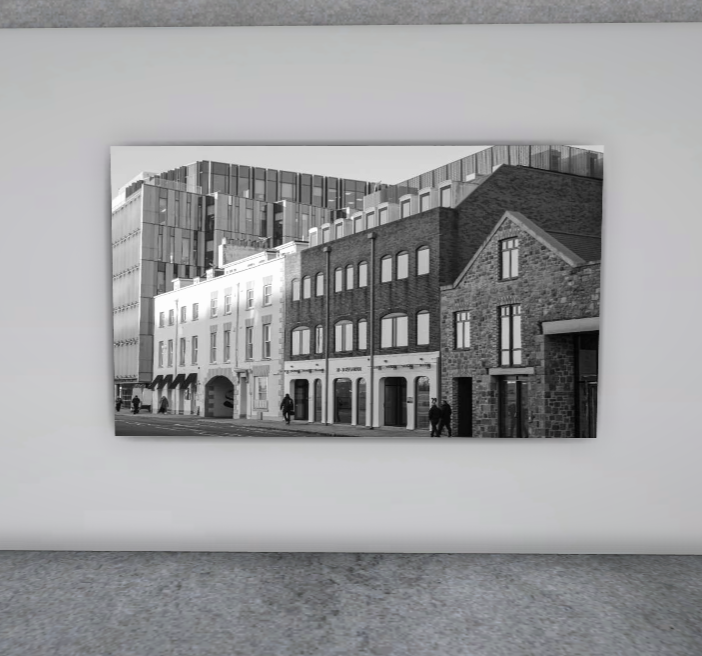
Prints
These are the images which I am going to print and their sizes:
6 x A5 Prints

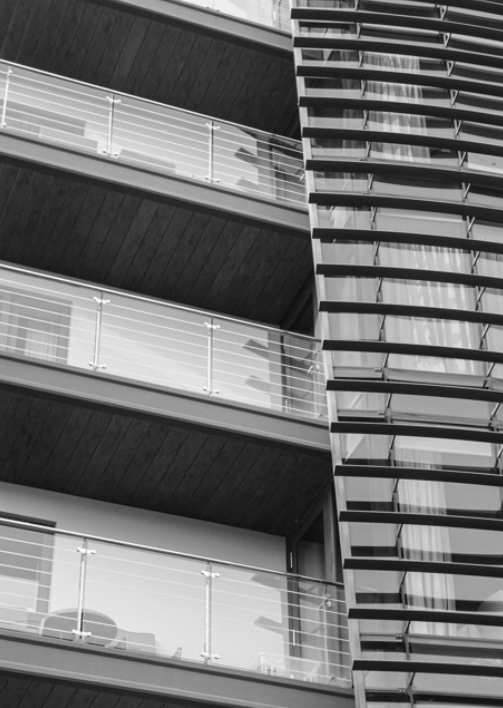
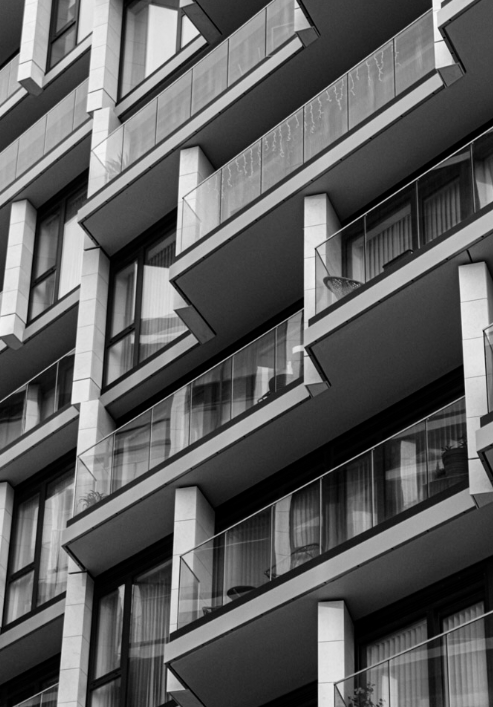



6 x A4 Prints
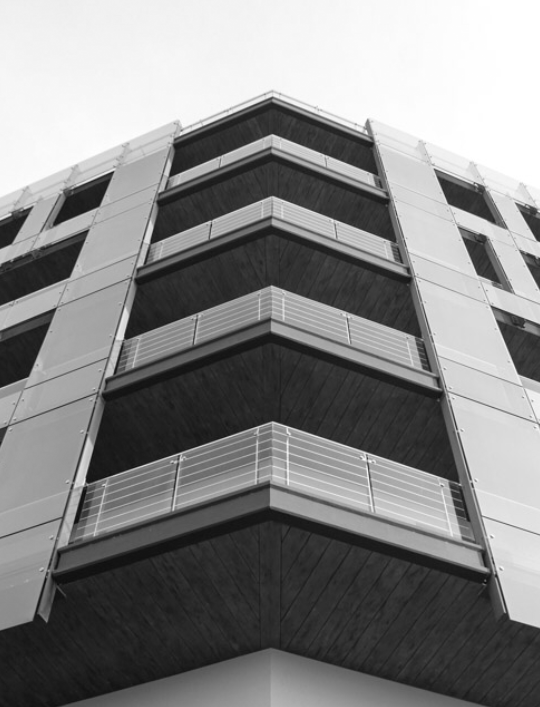



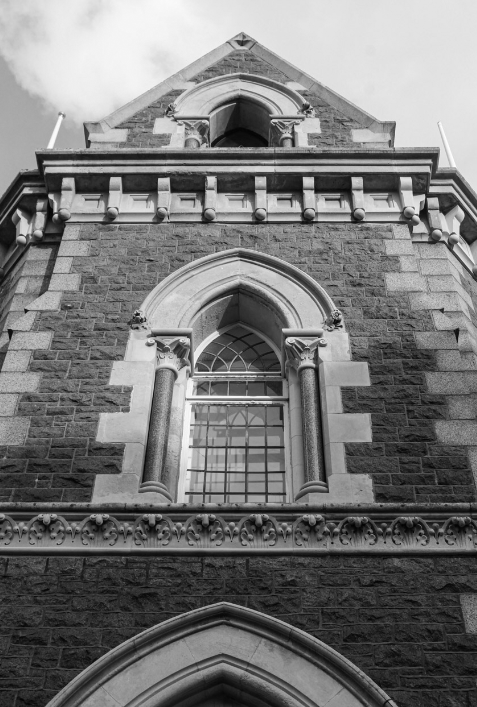
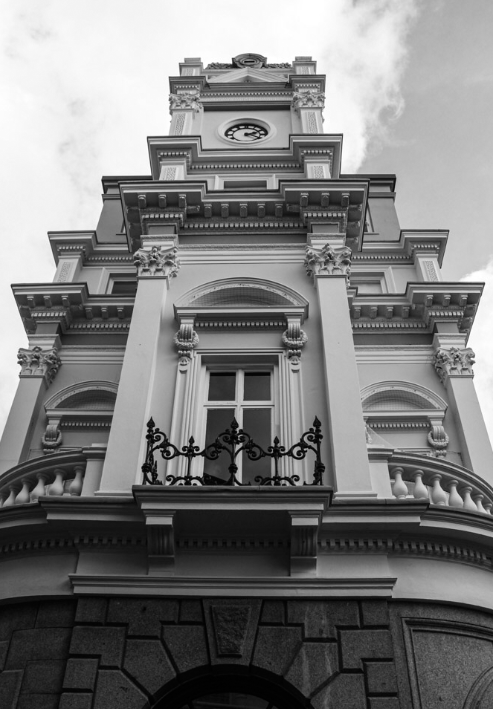
1 x A3 Print
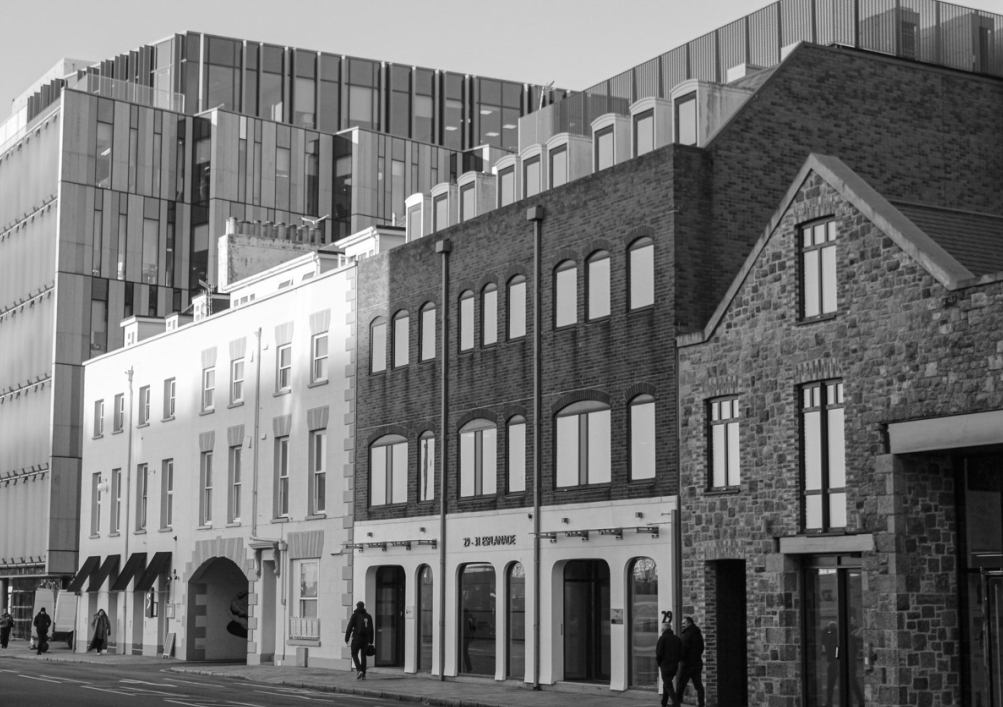
Virtual gallery and evaluation:
1:

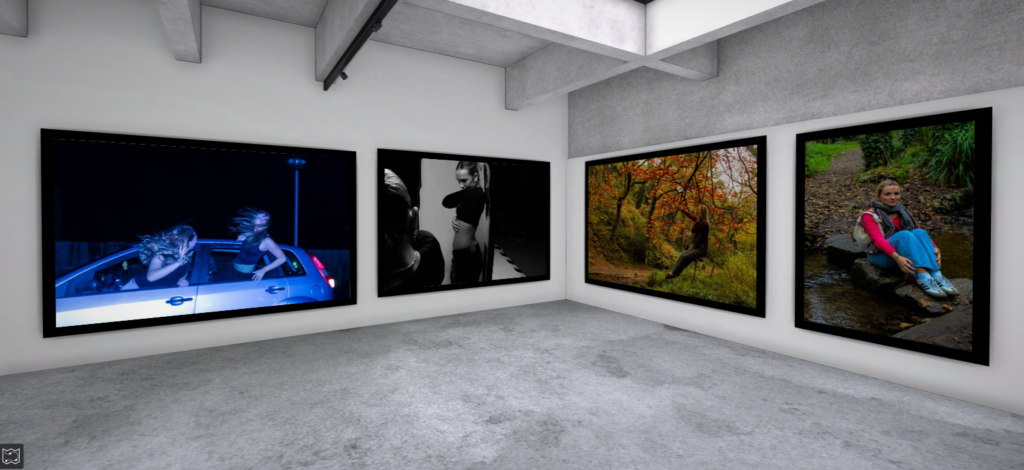
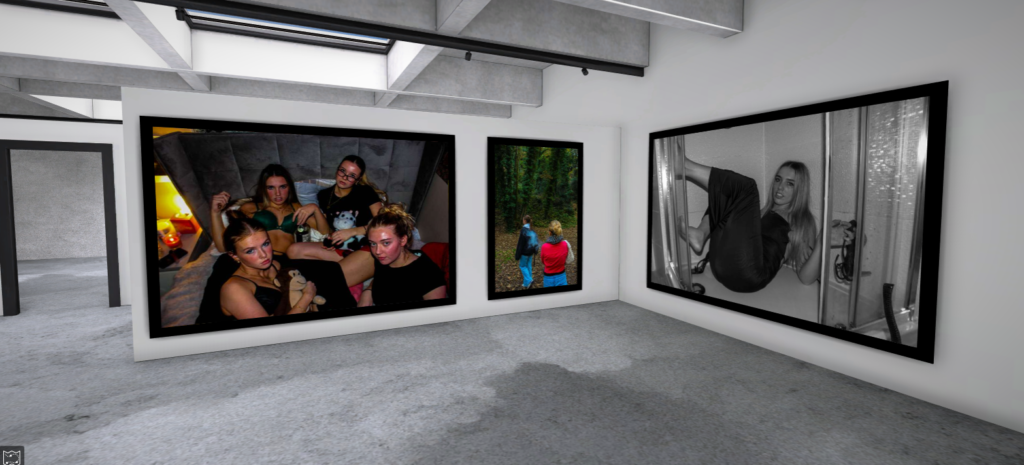
2:

Evaluation:
Overall, I am very happy with these final photos. I feel that I linked them all to one main theme, yet they tell different stories individually. I edited them all to be unique and different through tones and shadows. Therefore, these images stand out between each other and makes viewers question the narrative behind the photos.
Photobook Specification
Narrative: What is your story?
- 3 words: colour is important
- A sentence: show how colour makes the world more beautiful
- A paragraph: my story is to show how colour is important in a world which is becoming more grey and dull by creating colourful images to show the beauty and highlight the importance of it.
Design:
- How you want your book to look and feel: I want my book to look like a real hardback book with smoothness for the cover and also a bit of weight to it as you are holding a real book.
- Paper and Ink: I want my book to use Premium Lustre as it is good quality paper and also it is Lustre which mean it is a bit glossy and will give the images a shaper and brighter colours which is perfect for my book especially as it is about colour As my images are taken at night black paper would work well with the photo and overall theme.
- Format, size and orientation: For my photo book want it to be Standard A4 as it is the perfect size for my book because I don’t feel like it needs to be an overly big book, and for a small book the images won’t look as good and have the same emphasis if they were tiny. I also decided on portrait for the orientation as it is good for my portrait photos and for my landscape photos can be placed on a double page spread so they fit both pages.
- Binding and cover: For the cover I want to have an image wrap which goes across both sides with my name and the book title on the spine so you can tell what the book is if it is on a bookshelf.
- Title: I came up with the title ‘The importance of colour’ as I want the reader see how important colour is when they see my book and ‘the importance of colour’ really sums my project up.
- Design and layout: for my photos I want them to be laid out as an image per side or to emphasise images have them as either a double page spread or one image per whole page.
- Editing and sequencing: For the sequencing there is no specific sequence however I would like to have my images together which I can group such as all the images of the trees with the coloured lights on them together and have all the green and purple images together rather than some being at the start and some at the middle of the book, also images which are taken at the same/similar locations can be together.
- Images and text: For the images I want them to be really colourful as my book is about colour For the text I want to include a quote on the first page to give context to the photos. For the essay I want to use white text as it will contrast nicely with the black pages and have some words in colour if I am mentioning colour as my book is about colour and it will look nice make it look more interesting and engaging to the reader.
Mood Board
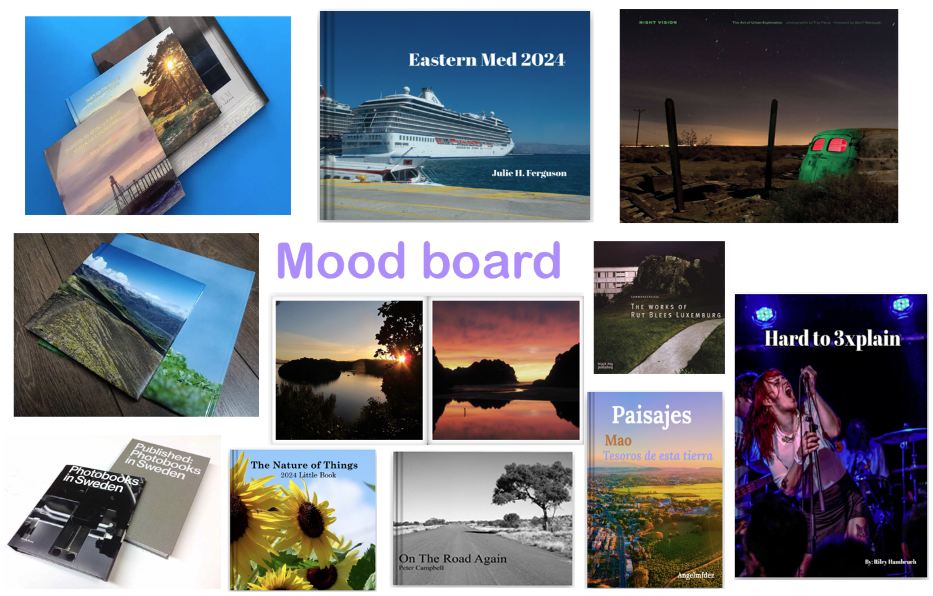
Photobook-Research & Understanding
Rita Puig-Serra: Where Mimosa Bloom
1. Research a photo-book and describe the story it is communicating with reference to subject-matter, genre and approach to image-making.


2. Who is the photographer? Why did he/she make it? (intentions/ reasons) Who is it for? (audience) How was it received? (any press, reviews, awards, legacy etc.)
The photographer is called Rita Puig-Serra Costa
The book was created after the death of her mother, she made it as a way to deal with her grief following this.
The book “Where Mimosa Bloom” takes the form of an extended farewell letter with the use of photography presenting a visual outlook. It is part photo-essay, part family biography, part of a personal message to her mother.
The elements combine to create an intriguing view and discourse of love, sorrow and loss. The book is a finished result of over 2 years collecting different materials as well as preserving and maintaining them. She also took photographs of places, objects and people that had a significant part in her relationship to her mother.
She proves in her book that some aspects of grief can be universal or can be made so through the honest and precision with they are articulated.
The book is a First Edition and from what I found out it has:
- 460 copies
- 96 pages, 54 colour plates
- 5 die cut pages
- 16.0 cm x 22.5 cm
- Hot foil embossed printed textured hardcover
- Offset printing
- Éditions du LIC 2014
The book also explores themes of memory, nature, and the passage of time, specifically through the motif of the mimosa flower. It invites the reader into a sort of experience, offering not just a narrative through its images but also through the physicality of the object itself. To fully understand the book’s impact, it’s important to consider its narrative, design, and structure in detail.
3. Deconstruct the narrative, concept and design of the book and apply theory above when considering:
Book in hand: how does it feel? Smell, sniff the paper.
Paper and ink: use of different paper/ textures/ colour or B&W or both. Format, size and orientation: portraiture/ landscape/ square/ A5, A4, A3 / number of pages.
Binding, soft/hard cover. image wrap/dust jacket. saddle stitch/swiss binding/ Japanese stab-binding/ leperello
Cover: linen/ card. graphic/ printed image. embossed/ debossed. letterpress/ silkscreen/hot-stamping.
Title: literal or poetic / relevant or intriguing.
When you hold “Where Mimosa Bloom“, it’s clear that the book is designed to be an experience. The cover has a soft, linen texture that feels inviting and warm. It’s a tactile quality that pulls you in and encourages interaction. The weight of the book is substantial (not too heavy—just enough to feel like a well-crafted object in your hands).
When you open the book, you immediately notice the subtle scent of fresh paper and ink. It’s not overpowering, but it adds an extra sensory layer to the experience, especially when flipping through the pages. The texture of the pages is smooth with a slight tooth to them, which complements the natural themes of the book.
The paper used is slightly off-white with a matte finish. This paper choice isn’t glossy, which helps to prevent any glare, allowing the colours in the photographs to stand out in a more subdued, intimate way. The book is printed in full colour, and the images—often of lush landscapes, flowers, and natural settings—have a soft yet vibrant quality. The book is in portrait format, which feels appropriate for the subject matter, allowing each image to be presented with enough space to breathe. It’s not too large or too small; the dimensions strike a good balance for the photographs to hold the reader’s attention while still feeling accessible.
The book is bound using Swiss binding, which allows the pages to lay flat when opened. This binding style is ideal for a book like this, where the sequencing of images is essential. The cover is linen-wrapped, with an embossed title. There’s no dust jacket, which gives the book a more intimate feel. It’s minimal, but the tactile experience of the linen cover and embossed title make the book feel special.
The book has a hardcover as well as including inside matte paper pages this is consistent throughout the whole book.
The book is in a portrait format as well as in A4. The front cover has printed matte image of a young child, the front cover is quite blurry so it isn’t clear what the image actually is trying to make out to be. The title appears on the spine of the book which include the name of the photographer the title in the middle stating “WHERE MIMOSA BLOOM” as well as in the right corner “Editions du LIC”.
Narrative: what is the story/ subject-matter. How is it told?
Structure and architecture: how design/ repeating motifs/ or specific features develops a concept or construct a narrative.
Design and layout: image size on pages/ single page, double-spread/ images/ grid, fold- outs/ inserts.
Editing and sequencing: selection of images/ juxtaposition of photographs/ editing process.
Images and text: are they linked? Introduction/ essay/ statement by artists or others. Use of captions (if any.)
The story in Where Mimosa Bloom is not told in a traditional sense. It’s less about a linear narrative and more about an exploration of themes like memory, loss, and the fleeting beauty of nature. The mimosa bloom becomes a metaphor for these transitory moments in life—beautiful yet brief.
The book allows the images to communicate the narrative. There’s a quiet, reflective mood throughout it. The subject matter is focused on the mimosa flower and natural scenes, with images of landscapes, close-ups of flora, and the gentle play of light and shadow (relating to the title). These photographs don’t tell a story in a traditional sense but instead invite the viewer to reflect on the beauty of these moments and the passage of time.
The relationship between the images and text in Where Mimosa Bloom is minimal but thoughtful. There are no long essays or extensive captions; instead, the book relies on the photographs to tell the story. The text is used sparingly, with brief captions that offer a few words of reflection or context, but these are secondary to the images themselves.
The captions are brief and poetic, they’re not meant to explain the images but rather complement them, adding a layer of reflection that allows the viewer to dive deeper into the emotional and thematic elements of the book. The lack of extensive text allows the images to remain the focal point, which is key in this book, where the photographs themselves are the primary means of communication.
UNDERSTANDING PHOTOBOOKS:
“Where Mimosa Bloom” is a thoughtfully designed photobook that explores themes of impermanence, memory, and the beauty of nature. Its careful attention to physical details—the tactile quality of the paper, the thoughtful binding, and the use of space—invites the reader to engage with the book in a sensory way. The narrative is built through the images themselves, with minimal text, allowing the viewer to experience the fleeting beauty of the mimosa blooms and reflect on the passage of time.
The book’s structure, design, and layout all work together to create an experience where each image is given the space to resonate and connect with the viewer. Through careful sequencing, image selection, and the integration of text, Where Mimosa Bloom becomes more than just a collection of photographs and turns into an emotional and sensory journey that encourages reflection on the transience of life.
